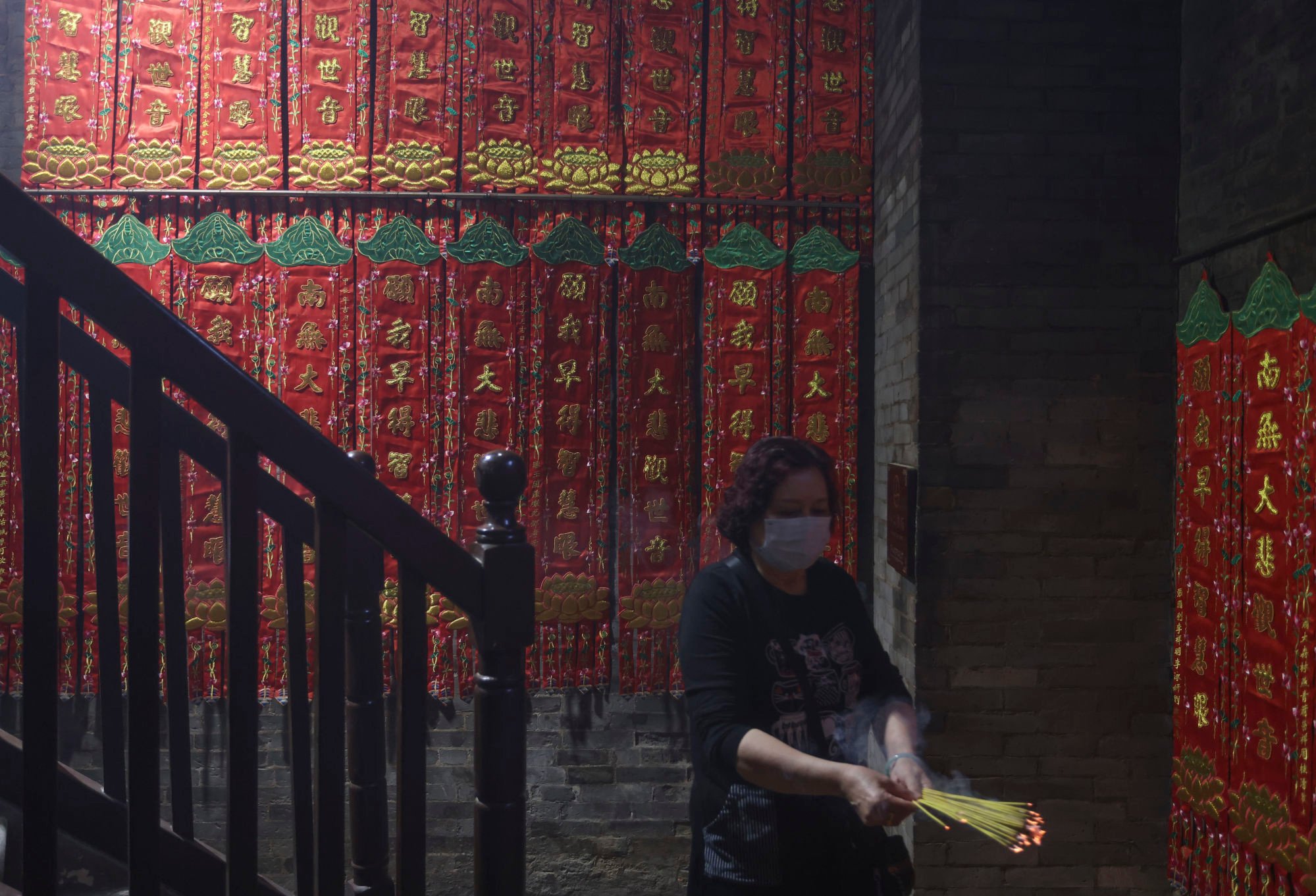Even older than the 144-year-old dance and open to visitors every day is the Lin Fa Kung Temple, an architecturally unusual structure devoted to the worship of Kwun Yum, a Buddhist and Taoist deity of compassion, sympathy and mercy.

It was built in 1863, on top of a rock on a hill near the sea. One-hundred-and-sixty-one years have passed and the rock is still intact, dramatically revealing itself to temple visitors.
The story goes that the villagers of Tai Hang kept seeing Kwun Yum on a huge rock by the sea before 1863. They named the rock “lotus rock” and built the temple there.


It is not surprising to learn, then, that the name “Lin Fa Kung” means “palace of lotus”. The lotus is a symbolic flower in Buddhism that represents spiritual awakening, and is also closely associated with Kwun Yum.
Back in the day, the temple played a central role in the lives of Tai Hang villagers. Since the inception of the fire dragon dance, the villagers have held a ceremony and paid respect to Kwun Yum there before the fire dragon starts to dance. This tradition has been kept alive to this day.
Before land reclamation in 1883, which pushed the coast line from Tung Lo Wan Road – around 60 metres from the temple – to Causeway Road, the main road where the tram tracks are laid, the temple was so near the water that during high tide, seawater would reach just below the building’s arches, making the temple resemble a lotus blooming in water, according to the Chinese Temples Association, which administers Lin Fa Kung.


The temple grabs the attention of passers-by walking to Tai Hang from the Tin Hau MTR station, following Tung Lo Wan Road. Its rare half-octagonal exterior is adorned with colourful embellishments of peaches and cranes, both symbols of longevity.
The temple has a veranda, the door to which is kept unlocked when the temple is open. This allows a view inside from afar – even from the other end of the street – and some older Hongkongers briefly stop by to offer up a short prayer there. Some stand right outside the veranda and say a prayer, too.
It is the interior of the temple, however, that is a must-see. Building a structure that incorporated the natural wave-like contours of the rock meant that the temple would consist of two floors. The top floor is a mezzanine, and the staircase up to it is built onto the rock and almost blends in with it.



There is an altar on each floor. The stone Kwun Yum altar on the bottom floor dates back to 1885 while the offering table goes back to 1864 and the bell to 1865. The ceiling of the front hall has a lively fresco of a dragon, with densely packed scales and thick hair.
Here, worshippers light incense sticks of various sizes and pray. Two sculptures of the deity of compassion are dressed in white robes embroidered with colourful flowers and adorned with layers of Buddhist prayer beads. The deity is believed to hear the suffering of all sentient beings and grant them good fortune.
Tai Hang already feels much quieter and more peaceful than the adjacent bustling commercial centre of Causeway Bay. But the street on which the temple is located, Lin Fa Kung Street West, feels especially peaceful, with only a few cars coming in and out of the dead-end road.


The Western-style cafes and restaurants located next to the temple have contributed to Hong Kong’s eccentric and quintessentially East-meets-West atmosphere.
Behind the temple is a quiet park, visited by few, the lush trees providing a beautiful backdrop to this palace of the lotus.














